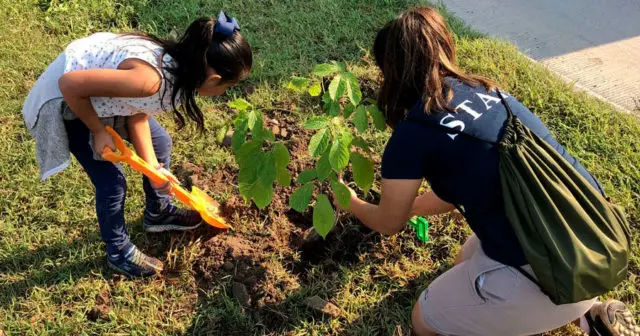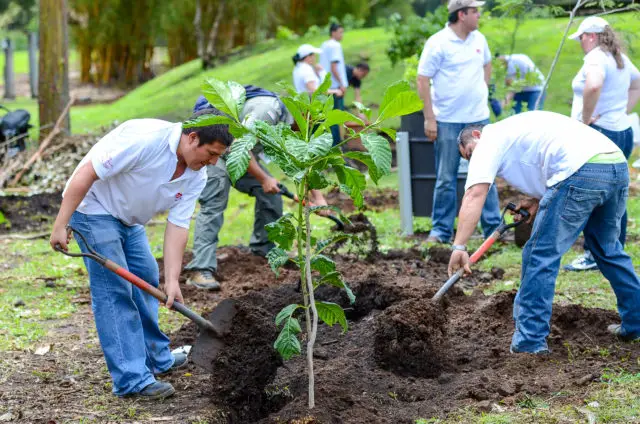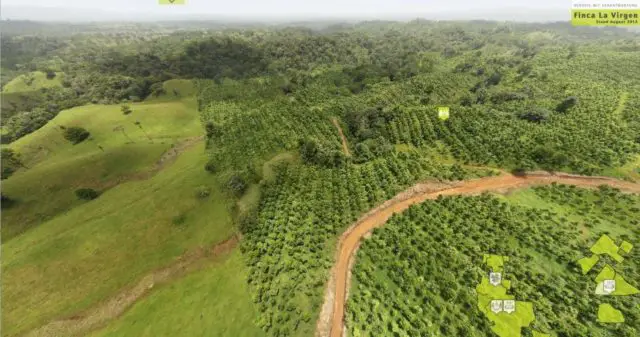
“Planting trees to save the planet” is a mathematical theory of Tom Crowther, a professor at the Swiss Institute of Technology. “Forest reforestation is by far the most powerful planetary solution we have today,” he said. For experts, mass reforestation would be the key to stop climate change. They discovered that a strategic tree plantation on an important area could quantify a large amount of carbon dioxide.
Let’s remember that in Costa Rica, people are doing what seems impossible making it possible, to mention one of them, Jennifer Leigh Smith and her project that we have highlighted on several occasions: “Community Carbon Trees”, for 17 years she has been willing to discuss her goal and make presentations on climate change on a case-by-case basis.
For this world citizen, the goal is 1 million trees planted and with follow-up protected care, “we are now at 558,000 well-grown trees in the last 17 years, we are more than half and we can achieve that goal if many more people participate and if we can make bigger collaborations where everyone participates. Reforestation begins with a seed, with the will to contribute”.
Without a doubt, the world is experiencing a great climate crisis and ways are sought to combat it. Global warming strongly affects the present and future of humanity. Specialists have conducted several studies to know what would be the way forward and heal the environment that is so hurt, given this: Mass reforestation would be the only resource at hand.
A recent study ensures that reforesting an important area of the planet could capture two-thirds of the carbon dioxide that is generated in the world by existing industries. According to scholar Tom Crowther, a professor at the Swiss Institute of Technology, based on more than 80 thousand satellite images, there are 900 million hectares in the world that could be key to reforestation. This should be a strategic and privilege native species of each region where the trees can be planted.

Crowther estimates that this would cost approximately $300 million and points to the recovery of biodiversity in each of these portions of land, thus these forests would-be allies and not enemies of the local communities.
At the end of 2019, it was known that the world will suffer in this 2020, in the face of a climate crisis, through a report entitled “Global Humanitarian Overview”, that 170 million people around the world will need emergency assistance. According to the United Nations Organization (UN), almost $ 30 billion is needed to help an unprecedented number of people affected by climate change and the multiplication of long-term related conflicts. They argue that conflicts are becoming more prolonged and intense throughout the world. Floods and droughts are added to climate change. Among the priority countries, there are Yemen and Syria to which the UN plans to allocate more than 3 billion dollars.
Costa Rica always advancing.
This Central American country, in 2007 was defined as a global example in reforestation, merit that gave much to say and still…in this year 2019 that has just ended it was also known that Costa Rica has twice as many forests as 30 years ago!

The United Nations University reports that in 1940 Costa Rica had 75% of tropical forests, in areas usually inhabited by native indigenous people, but in subsequent decades they had tended to disappear. Various agricultural activities and the excessive extraction of natural resources caused that by 1983; only 26% of the territory still had forests.
The report stressed that the country is on its way to recovering all its lost forests. According to the United Nations University, Costa Rica’s success is due to three factors: ethics, environmentalism and effective public policies.
Now, citizens must have full knowledge that reforestation does not only require good intentions but also planned and well-executed actions. Costa Rica is an inspiration to achieve massive reforestation, we are sure of that.

